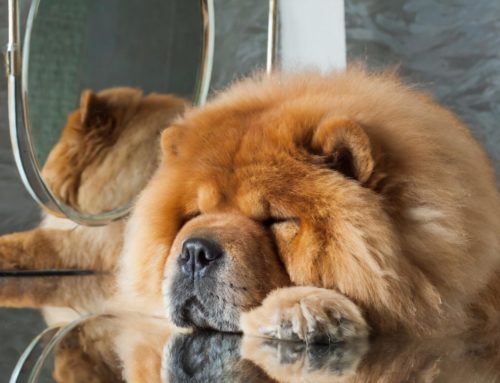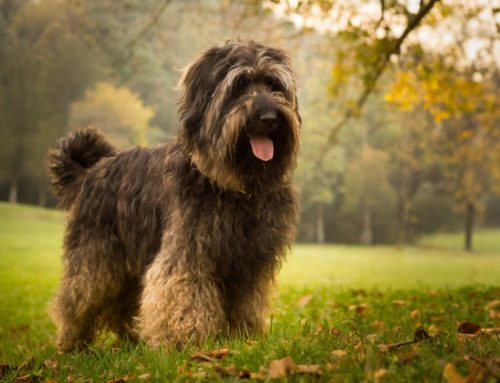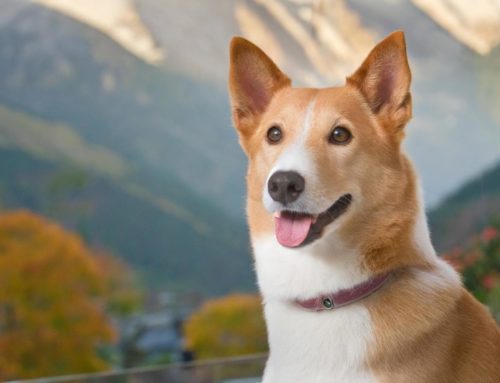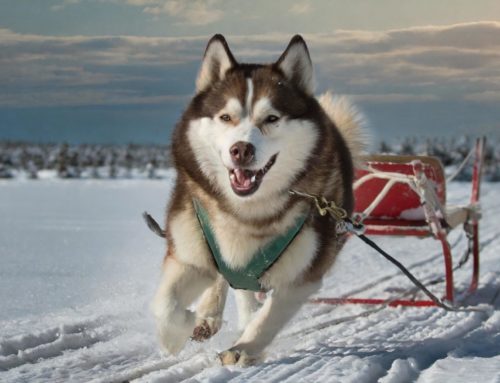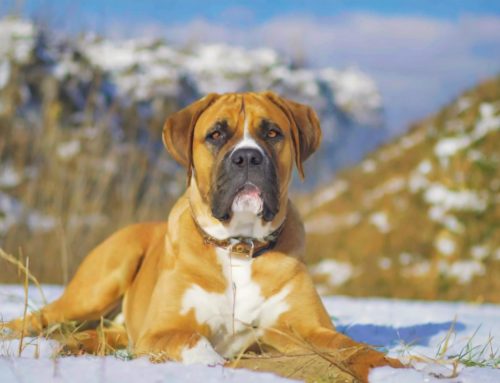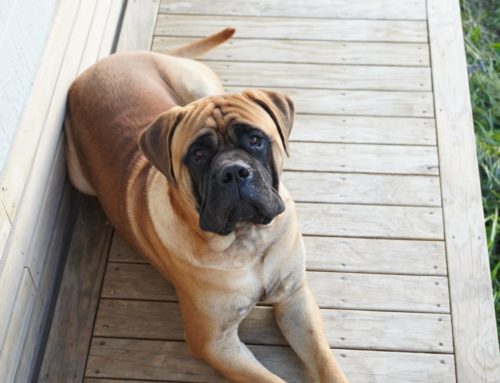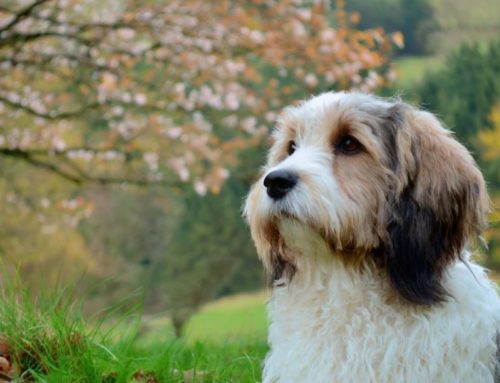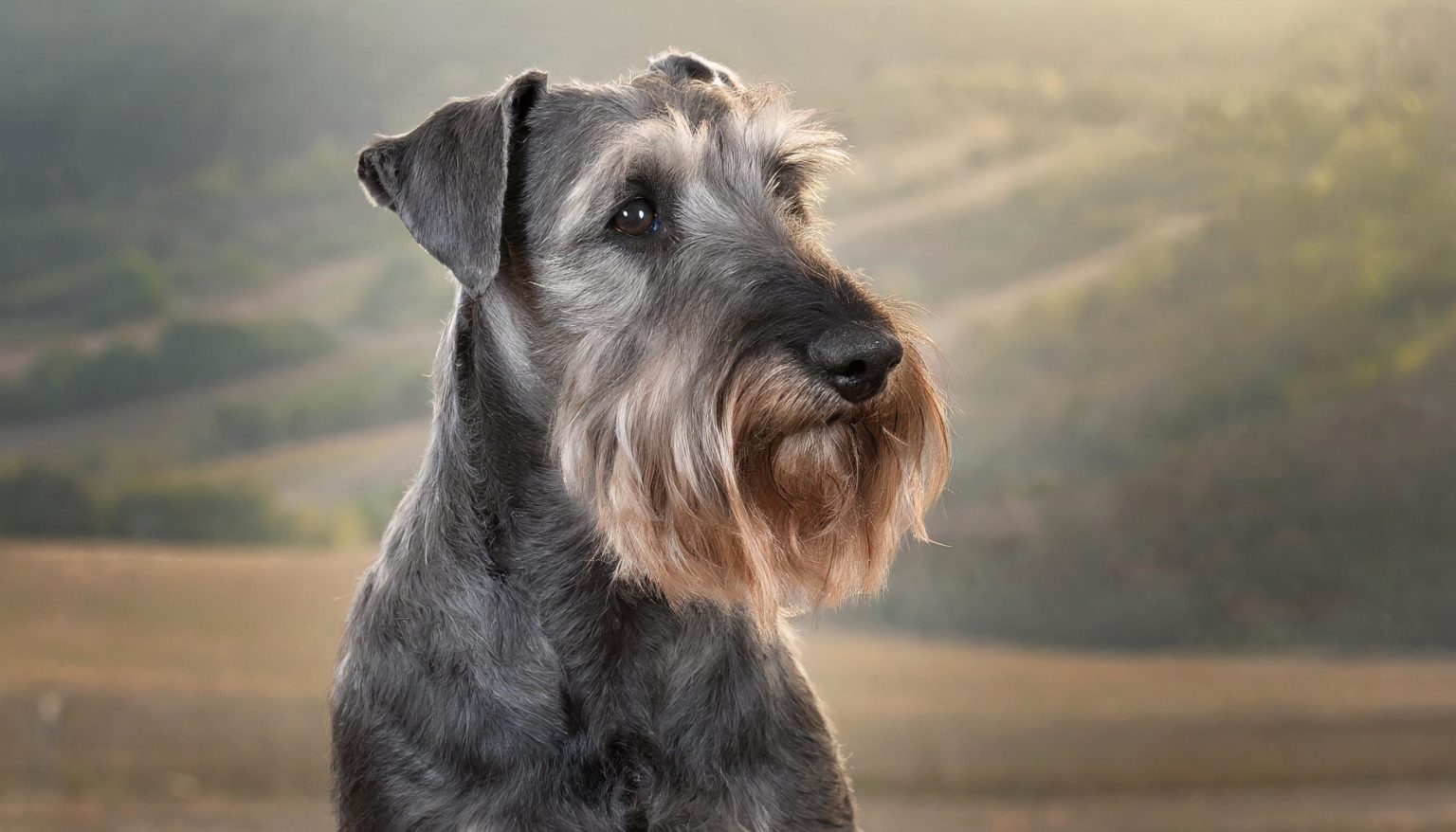
The Cesky Terrier, a recognised breed native to the Czech Republic, has a unique history. This medium-sized, short-legged terrier with a silky coat is the result of a deliberate cross between the Scottish Terrier and the Sealyham Terrier.
This cross was initiated in 1949 by Czech breeder František Horák, who aimed for a lighter and more agile dog, suitable as a hunting and companion dog. The Cesky Terrier was the answer to this quest. Given its character, the Cesky is still used for hunting, and various obedience exams and competitions are also among its capabilities.
The Cesky Terrier is a small but well-built dog, with a back that is strong and longer than high. The movement should be free, light and spacious, which is characteristic of this dog’s build.
It can appear in both the grey and brown varieties, with yellow or white markings allowed on the head. Eyebrows and a beard give the Cesky Terrier a unique expression that sets it apart from other small dog breeds in the world.
Cesky Terrier FCI Group 3 Terriers
The Cesky Terrier belongs to FCI Group 3, Terriers, Section 2, which includes the smaller terrier breeds. This breed is characterized by its slender but robust physique, long silky coat, which is typically blue-gray or light brown in color, and its friendly, calm temperament.
Despite their hunting background, Cesky Terriers are known to be gentle and affectionate, making them excellent companion dogs.
Coat and appearance of the Bohemian terrier
The Cesky Terrier, sometimes referred to as the Bohemian Terrier, is a unique creation of František Horák, a Czech breeder. This breed, created in 1963, is the result of a deliberate cross between the Scottish Terrier and the Sealyham Terrier. The Cesky Terrier is distinguished by its distinctive, grey-blue coat, which can also vary to brownish shades.
This small dog, recognisable by its long, low-set head and almond-shaped eyes, has a gentle nature that differs from the typical terrier temperament. The Cesky’s coat requires regular maintenance; it should be brushed at least once a week and trimmed regularly to keep it tidy.
These short-haired, small dogs have a low-hanging coat that is soft and silky to the touch. Their short legs and body that is longer than tall give them a distinctive appearance. Despite their size, Cesky Terriers are still capable hunting dogs and enjoy activities that suit their hunting instincts.
Hereditary diseases and disorders
A relatively healthy breed, the Cesky Terrier, like any other breed, can be susceptible to certain hereditary diseases and disorders.
Here is a list of some diseases and disorders known to affect this breed:
- Scotty Cramp: A non-painful condition that leads to problems with movement and coordination.
- Cataract: This eye condition, in which the lens of the eye becomes cloudy, can lead to impaired vision or blindness.
- Luxating Patella: A common condition in small dogs, in which the kneecap juts out of its normal position.
- Progressive Retinal Atrophy (PRA): An eye disease that can eventually lead to blindness.
- Cardiomyopathy: A heart disease that affects the heart muscle, which can lead to heart failure.
- Hypothyroidism: A disorder of the thyroid gland that can lead to weight gain, lethargy and skin problems.
- Epilepsy: A neurological disorder that can lead to seizures.
- Cushing’s Syndrome: A condition in which the body produces too much of the hormone cortisol.
The character of the Cesky Terrier
This short-legged terrier is not a typical terrier in character; it is calmer and more adaptable. Cesky Terriers are known to get along well with all dogs and are often members of terrier clubs and the Cesky Terrier Fanciers Association.
Despite their background as hunting dogs, Cesky Terriers have a gentle temperament. They are affectionate and enjoy company, both from people and other pets. Their eyes are almond-shaped and often express a gentle, friendly look. The long head, with distinctive pendant ears worn downwards, gives them a unique look.
The Cesky Terrier loves interaction and is well suited to family life. They can stand being alone well, if properly socialised.
These dogs adapt well to various environments and often love to travel. The Cesky Terrier is quite affectionate and is known to get along well with pets and stand up well to the hustle and bustle of a big city, if properly socialised. They are generally reserved towards strangers, but not aggressive.
Thanks to their origins from two different terrier breeds, Cesky Terriers are flexible and versatile, suitable for both hunting and companionship. These characteristics make the Cesky Terrier a beloved national dog of the Czech Republic and a valued member in many households.

Care of the Cesky Terrier
The care of the Cesky Terrier, a breed bred by František Horák as a result of a cross between the Scottish and Sealyham Terriers, requires some attention, especially because of their unique coat and build. This Czech terrier is a short-legged dog with a silky coat that can come in both grey and brown colours.
The Cesky Terrier’s coat requires regular grooming. It is recommended to brush the coat at least once a week to prevent tangles and keep the skin healthy. Trimming the coat should be done about every six to eight weeks, depending on growth rate and personal preference.
The Cesky’s eyes, almond-shaped and expressive, should be checked regularly for signs of irritation or infection. The long ears should also be checked and kept clean to avoid ear problems. Although the Cesky Terrier copes well with the hustle and bustle of a big city and is often fond of travelling, it is important to give it plenty of exercise.
Originally used as a hunting dog, this breed needs a moderate amount of daily exercise to stay healthy and happy. Even though the Cesky Terrier is not a typical terrier in character, they do tend to get along well with other dogs, which makes them ideal for social activities.
Socialisation and upbringing of the Cesky Terrier
The socialisation and upbringing of the Cesky Terrier are crucial for its development into a well-adjusted and happy dog. As an intelligent and sensitive breed, the Cesky Terrier responds well to positive reinforcement and consistent training.
Socialisation should begin at an early age. Expose the Cesky Terrier to various people, animals, environments and sounds. This helps reduce fear or aggression towards unfamiliar situations. Puppy classes and visits to dog playgrounds are excellent ways to develop social skills.
When raising dogs, it is important to be patient and consistent. The Cesky is smart and learns quickly, but has a will of its own. Use positive reinforcement such as praise, playtime and treats to reward good behaviour. Avoid harsh training methods as these can have negative effects on their confidence and behaviour.
Teach the Cesky basic commands such as sit, stay, and come here. This not only strengthens the bond between dog and owner, but also increases the dog’s safety in various situations. Obedience training can also help manage their hunting instinct.
Finally, ensure adequate mental and physical stimulation. Cesky Terriers enjoy activities that challenge them both physically and mentally. Think agility training, tracking or interactive games.
How much experience does a Cesky Terrier require
The Cesky Terrier can suit both experienced and inexperienced dog owners, depending on their willingness to learn and adapt to the needs of the breed. For inexperienced owners, it is important to understand that although the Cesky Terrier is not the most demanding dog, it still requires a certain level of dedication and understanding in terms of training and care.
Inexperienced owners should be prepared to invest time in learning about positive training methods, socialisation and general care of the Cesky. These dogs are intelligent and learn quickly, but they need a consistent and patient approach. Attending puppy classes or seeking guidance from a professional dog trainer can be very helpful.
For experienced dog owners, the Cesky Terrier can be a joyful addition to the family. Their experience in training and behaviour management can help them socialise and train the Cesky effectively, preventing common behavioural problems.
Is training necessary?
Training is absolutely necessary for the Cesky Terrier, as with any dog breed. This intelligence and sensitivity of this breed make training not only possible, but essential for harmonious coexistence. The Cesky Terrier, known for its sharp wit, picks up commands and instructions quickly.
Early and consistent training helps develop good manners and prevents behavioural problems. Basic commands such as ‘sit’, ‘stay’, and ‘come here’ are crucial for the dog’s safety and make daily handling easier.
Positive reinforcement techniques work best with Cesky Terriers. They respond well to rewards such as treats, praise and playtime, making the learning process more enjoyable and effective. Harsh or punitive methods can have negative effects on their temperament and confidence.
Socialization is another important aspect of their training. Exposing the Cesky Terrier to different people, animals and environments from an early age helps develop a well-adjusted and confident adult dog.
How much exercise does a Cesky Terrier need?
The Cesky Terrier, although smaller and less energetic than some other terrier breeds, still needs plenty of daily exercise to stay healthy and happy. On average, a Cesky Terrier needs about 30 to 60 minutes of exercise per day. This exercise can include walks, play sessions, and mental stimulation through training or puzzle games.
Walks should preferably be spread throughout the day, with a longer walk combined with one or two shorter outings. This helps maintain the dog’s physical and mental health. Cesky Terriers also enjoy games such as fetch, which fulfills both their physical and instinctive needs.
It is important to remember that although the Cesky Terrier can live well in an apartment, it still needs space to exercise and play. A secure, fenced-in yard can be an excellent place for the Cesky to expend some energy.

How does it get along with children?
The Cesky Terrier is known for its friendly and gentle nature, which generally makes it a good choice for families with children. This breed is affectionate and enjoys the attention and company of its human relatives, including children.
Their relatively calm temperament makes them a less overwhelming option for young family members compared to more energetic or larger breeds. However, when Cesky Terriers interact with children, it is important to provide guidance and supervision, especially with younger children.
Children should be taught how to treat the dog respectfully and gently to avoid making the dog feel threatened or uncomfortable. This includes teaching the children about the dog’s boundaries, such as avoiding disturbing the dog while eating or sleeping.
The Cesky Terrier is also an intelligent breed that can enjoy playful interactions, making it a fun companion for children. However, it is imperative that both dog and children understand how to interact safely.
Advantages of a Cesky Terrier
- Adaptability: Cesky Terriers adapt well to different living environments, including flats.
- Temperament: They are known for their friendly and calm nature, making them good companion dogs.
- Size: As a small- to medium-sized breed, they are manageable and suitable for people who do not want a large dog.
- Trainability: Cesky Terriers are intelligent and respond well to positive training methods.
- Companionship: They form strong bonds with their family and are often very affectionate.
Disadvantages of a Cesky Terrier
- Coat care: Their silky coat requires regular brushing and professional grooming to prevent tangles.
- Exercise needs: They need moderate daily exercise to stay healthy and happy.
- Health problems: As with many breeds, Cesky Terriers can be prone to certain hereditary health problems.
- Socialisation: Early and ongoing socialisation is necessary to avoid timid or reserved behaviour.
- Stubbornness: They can sometimes be stubborn, which requires consistency in training.
How old a Cesky Terrier gets
The life expectancy of a Cesky Terrier averages between 12 and 15 years, which is relatively long for a dog breed. As with all breeds, the lifespan of individual Cesky Terriers can vary depending on various factors, including genetics, lifestyle, diet and healthcare.
Price of a Cesky Terrier
Cesky Terriers, due to their scarcity in the US, command a high price. Here’s an overview of what you might expect to pay:
Price Range: Be prepared to spend between $2,500 and $5,000 or more for a Cesky Terrier puppy in the US.
Factors Influencing Price: The cost can vary based on several factors:
- Breeder Reputation: Puppies from well-established breeders known for producing champion Cesky Terriers will generally cost more.
- Pedigree: Purebred Cesky Terriers with registration from the American Kennel Club (AKC) will be pricier than those without.
- Location: Prices may be higher in regions with a higher cost of living.
- Age: Puppies typically cost more than adult Cesky Terriers.
- Show Quality: Dogs bred for show or competition are usually more expensive.
Finding a Cesky Terrier:
- Breeders: Due to their rarity, patience might be needed to find a Cesky Terrier breeder. Look for reputable breeders associated with the American Cesky Terrier Fanciers Association.
- Rescue: It’s less common, but breed-specific rescues or general shelters may occasionally have a Cesky Terrier.
Considering Other Breeds:
If open to alternatives, consider other breeds with similar traits to the Cesky Terrier, such as:
- Scottish Terrier
- Sealyham Terrier
- Miniature Schnauzer
- Jack Russell Terrier
Before Committing:
- Research: Ensure a Cesky Terrier suits your lifestyle.
- Visit the Breeder: Meeting the puppy’s parents and checking the breeder’s facilities can provide insights into the puppy’s health and temperament.
